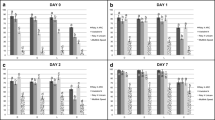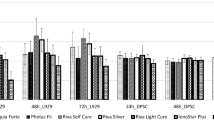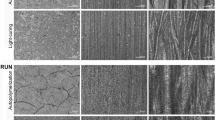Abstract
The main aim of this study was to perform an integrative review on the toxic effects of resin-matrix cements and their products in contact with fibroblasts or mesenchymal cells. A bibliographic search was performed on PubMed using the following search terms: “cytotoxicity” AND “fibroblast” OR “epithelial” OR “mesenchymal” AND “polymerization” OR “degree of conversion” OR “methacrylate” OR “monomer” AND “resin cement” OR “resin-based cement”. The initial search in the available database yielded a total of 277 articles of which 21 articles were included in this review. A decrease in the viability of mouse fibroblasts ranged between 13 and 15% that was recorded for different resin-matrix cements after light curing exposure for 20 s. The viability of human fibroblasts was recorded at 83.11% after light curing for 20 s that increased up to 90.9% after light curing exposure for 40 s. Most of the studies linked the highest toxicity levels when the cells were in contact with Bis-GMA followed by UDMA, TEGDMA and HEMA. Resin-matrix cements cause a cytotoxic reaction when in contact with fibroblasts or mesenchymal cells due to the release of monomers from the polymeric matrix. The amount of monomers released from the resin matrix and their cytotoxicity depends on the polymerization parameters.
Similar content being viewed by others
References
Hill EE, Lott J. A clinically focused discussion of luting materials. Aust Dent J. 2011;56:67–76.
Hill EE. Dental cements for definitive luting : a review and practical clinical considerations. Dent Clin N Am. 2007;51:643–58.
Lad PP, Kamath M, Tarale K, Kusugal PB. Practical clinical considerations of luting cements: a review. J Int Oral Health. 2014;6:116–20.
Şişmanoğlu S, Demirci M, Schweikl H, Ozen-Eroglu G, Cetin-Aktas E, Kuruca S, et al. Cytotoxic effects of different self-adhesive resin cements: cell viability and induction of apoptosis. J Adv Prosthodont. 2020;12:89–99.
Rohr N, Bertschinger N, Fischer J, Filippi A, Zitzmann NU. Influence of material and surface roughness of resin composite cements on fibroblast behavior. Oper Dent US. 2020;45:528–36.
Oguz EI, Hasanreisoglu U, Uctasli S, Özcan M, Kiyan M. Effect of various polymerization protocols on the cytotoxicity of conventional and self-adhesive resin-based luting cements. Clin Oral Investig Ger. 2020;24:1161–70.
Klein-Júnior CA, Zimmer R, Hentschke GS, Machado DC, Dos Santos RB, Reston EG. Effect of heat treatment on cytotoxicity of self-adhesive resin cements: cell viability analysis. Eur J Dent. 2018;12:281–6.
Nunes TG, Garcia FCP, Osorio R, Carvalho R, Toledano M. Polymerization efficacy of simplified adhesive systems studied by NMR and MRI techniques. Dent Mater. 2006;22:963–72.
dos Santos RL, Pithon MM, Martins FO, Romanos MTV, Ruellas ACO. Evaluation of cytotoxicity and degree of conversion of glass ionomer cements reinforced with resin. Eur J Orthod Engl. 2012;34:362–6.
Marvin JC, Gallegos SI, Parsaei S, Rodrigues DC. In vitro evaluation of cell compatibility of dental cements used with titanium implant components. J Prosthodont. 2019;28:e705–12.
Sun F, Mao P, Wang C, Shi C, Nie R, Han N, et al. Cytotoxic effects of one-step self-etching dental adhesives on human periodontal ligament fibroblasts in vitro. J Adhes Dent Ger. 2016;18:99–109.
Sun F, Liu Y, Pan Y, Chen M, Meng X. Cytotoxicity of self-adhesive resin cements on human periodontal ligament fibroblasts. Biomed Res Int. 2018;2018:7823467.
Çörekçi B, Halıcıoğlu K, Irgın C, Hezenci Y, Yavuz MZ. Effects of plasma-emulating light emitting diode (LED) versus conventional LED on cytotoxic effects of orthodontic cements as a function of polymerization capacity. Hum Exp Toxicol Engl. 2014;33:847–54.
Dickens SH, Stansbury JW, Choi KM, Floyd CJE. Photopolymerization kinetics of methacrylate dental resins. Macromolecules. 2003;36(16):6043–53.
Pieralli S, Kohal RJ, Jung RE, Vach K, Spies BC. Clinical outcomes of zirconia dental implants: a systematic review. J Dent Res. 2017;96:38–46.
Balmer M, Spies BC, Vach K, Kohal RJ, Hämmerle CHF, Jung RE. Three-year analysis of zirconia implants used for single-tooth replacement and three-unit fixed dental prostheses: a prospective multicenter study. Clin Oral Implants Res. 2018;29:290–9.
Wilson TG Jr. The positive relationship between excess cement and peri-implant disease: a prospective clinical endoscopic study. J Periodontol. 2009;80:1388–92.
Geurtsen W, Spahl W, Leyhausen G. Residual monomer/additive release and variability in cytotoxicity of light-curing glass-ionomer cements and compomers. J Dent Res. 1998;77:2012–9.
Sancho-Puchades M, Crameri D, Özcan M, Sailer I, Jung RE, Hämmerle CHF, et al. The influence of the emergence profile on the amount of undetected cement excess after delivery of cement-retained implant reconstructions. Clin Oral Implant Res. 2017;28:1515–22.
Ranjkesh B, Isidor F, Kraft DCE, Løvschall H. In vitro cytotoxic evaluation of novel fast-setting calcium silicate cement compositions and dental materials using colorimetric methyl-thiazolyl-tetrazolium assay. J Oral Sci Jpn. 2018;60:82–8.
Ramos-Tonello CM, Lisboa-Filho PN, Arruda LB, Tokuhara CK, Oliveira RC, Furuse AY, et al. Titanium dioxide nanotubes addition to self-adhesive resin cement: effect on physical and biological properties. Dent Mater Engl. 2017;33:866–75.
Mahasti S, Sattari M, Romoozi E, Akbar-Zadeh BA. Cytotoxicity comparison of harvard zinc phosphate cement versus panavia F2 and Rely X plus resin cements on rat L929-fibroblasts. Cell J. 2011;13:163–8.
Selimović-Dragaš M, Huseinbegović A, Kobašlija S, Hatibović-Kofman S. A comparison of the in vitro cytotoxicity of conventional and resin modified glass ionomer cements. Bosn J basic Med Sci. 2012;12:273–8.
Selimović-Dragaš M, Hasić-Branković L, Korać F, Đapo N, Huseinbegović A, Kobašlija S, et al. In vitro fluoride release from a different kind of conventional and resin modified glass-ionomer cements. Bosn J basic Med Sci. 2013;13:197–202.
Ergun G, Egilmez F, Yilmaz S. Effect of reduced exposure times on the cytotoxicity of resin luting cements cured by high-power led. J Appl Oral Sci. 2011;19:286–92.
Botsali MS, Kuşgöz A, Altintaş SH, Ülker HE, Tanriver M, Kiliç S, et al. Residual HEMA and TEGDMA release and cytotoxicity evaluation of resin-modified glass ionomer cement and compomers cured with different light sources. Sci World J. 2014;2014:218295.
Zhang C-Y, Cheng Y-L, Tong X-W, Yu H, Cheng H. In vitro cytotoxicity of self-adhesive dual-cured resin cement polymerized beneath three different cusp inclinations of Zirconia. Biomed Res Int. 2019;2019:7404038.
Celik N, Binnetoglu D, Ozakar Ilday N, Hacimuftuoglu A, Seven N. The cytotoxic and oxidative effects of restorative materials in cultured human gingival fibroblasts. Drug Chem Toxicol. 2019;44:502–7.
Gupta SK, Saxena P, Pant VA, Pant AB. Adhesion and biologic behavior of human periodontal fibroblast cells to resin ionomer Geristore: a comparative analysis. Dent Traumatol. 2013;29:389–93.
Michel A, Erber R, Frese C, Gehrig H, Saure D, Mente J. In vitro evaluation of different dental materials used for the treatment of extensive cervical root defects using human periodontal cells. Clin Oral Investig Ger. 2017;21:753–61.
Trumpaite-Vanagiene R, Bukelskiene V, Aleksejuniene J, Puriene A, Baltriukiene D, Rutkunas V. Cytotoxicity of commonly used luting cements—an in vitro study. Dent Mater J Jpn. 2015;34:294–301.
Ersahan S, Oktay EA, Sabuncuoglu FA, Karaoglanoglu S, Aydın N, Suloglu AK. Evaluation of the cytotoxicity of contemporary glass-ionomer cements on mouse fibroblasts and human dental pulp cells. Eur Arch Paediatr Dent. 2020;21:321–8.
Jiang RD, Lin H, Zheng G, Zhang XM, Du Q, Yang M. In vitro dentin barrier cytotoxicity testing of some dental restorative materials. J Dent Engl. 2017;58:28–33.
Turp V, Ongul D, Gultekin P, Bultan O, Karataslı B, Pak TE. Polymerization efficiency of two dual-cure cements through dental ceramics. J Istanbul Univ Fac Dent. 2015;49:10–8.
Sulaiman TA, Abdulmajeed AA, Donovan TE, Ritter AV, Lassila LV, Vallittu PK, et al. Degree of conversion of dual-polymerizing cements light polymerized through monolithic zirconia of different thicknesses and types. J Prosthet Dent. 2015;114:103–8.
Zimmerli B, Strub M, Jeger F, Stadler O, Lussi A. Composite materials: composition, properties and clinical applications. A literature review. Schweiz Monatsschr Zahnmed. 2010;120:972–86.
Yildiz O, Seyrek M, Ulusoy KG. Biocompatibility of Dental Polymers Biocompatibility of Dental Polymers. 2016. 88-98. In: Polymer Science: Research Advances, Practical Applications and Educational Aspects. Formatex Publisher; Elche, Spain.
Ferracane JL, Stansbury JW, Burke FJT. Self-adhesive resin cements—chemistry, properties and clinical considerations. J Oral Rehabil. 2011;38:295–314.
Tafur-Zelada CM, Carvalho O, Silva FS, Henriques B, Özcan M, Souza JCM. The influence of zirconia veneer thickness on the degree of conversion of resin-matrix cements: an integrative review. Clin Oral Investig. 2021;25:3395–408.
Fernandes V, Silva AS, Carvalho O, Henriques B, Silva FS, Özcan M, et al. The resin-matrix cement layer thickness resultant from the intracanal fitting of teeth root canal posts: an integrative review. Clin Oral Investig. 2021;25:5595–612.
Lopes-Rocha L, Ribeiro-Gonçalves L, Henriques B, Özcan M, Tiritan ME, Souza JCM. An integrative review on the toxicity of Bisphenol A (BPA) released from resin composites used in dentistry. J Biomed Mater Res B. 2021;109(11):1942–52.
Ikemura K, Ichizawa K, Jogetsu Y, Endo T. Synthesis of a novel camphorquinone derivative having acylphosphine oxide group, characterization by UV-VIS spectroscopy and evaluation of photopolymerization performance. Dent Mater J. 2010;29:122–31.
Lee DS, Jeong TS, Kim S, Kim HIl, Kwon YH. Effect of dual-peak LED unit on the polymerization of coinitiator-containing composite resins. Dent Mater J. 2012;31:656–61.
Schneider LFJ, Pfeifer CSC, Consani S, Prahl SA, Ferracane JL. Influence of photoinitiator type on the rate of polymerization, degree of conversion, hardness and yellowing of dental resin composites. Dent Mater. 2008;24:1169–77.
Santini A, Gallegos IT, Felix CM. Photoinitiators in dentistry: a review. Prim Dent J. 2013;2:30–3.
Fidalgo-Pereira R, Carpio DME, Carvalho O, Catarino S, Torres O, Souza JCM. Relationship between the inorganic content and the polymerization of the organic matrix of resin composites for dentistry: a narrative review. RevSALUS. 2022. https://doi.org/10.51126/revsalus.v4i1.136
Durner J, Obermaier J, Draenert M, Ilie N. Correlation of the degree of conversion with the amount of elutable substances in nano-hybrid dental composites. Dent Mater Dent Mater. 2012;28:1146–53.
Shim JS, Kang JK, Jha N, Ryu JJ. Polymerization mode of self-adhesive, dual-cured dental resin cements light cured through various restorative materials. J Esthet Restor Dent. 2017;29:209–14.
Roy P, Berger S, Schmuki P. TiO2 nanotubes: synthesis and applications. Angew Chem Int Ed Engl. 2011;50:2904–39.
Moszner N, Salz U, Zimmermann J. Chemical aspects of self-etching enamel-dentin adhesives: a systematic review. Dent Mater. 2005;21:895–910.
Acknowledgements
This work was supported by FCT-Portugal [UID/EEA/04436/2013, SFRH/BPD/123769/ 2016, and Project LaserMULTICER [POCI-01-0145-FEDER-031035].
Author information
Authors and Affiliations
Corresponding author
Ethics declarations
Conflict of interest
All authors declare that they have no conflict of interests.
Ethical approval
This article does not contain any studies with human participants or animals performed by any of the authors.
Additional information
Publisher's Note
Springer Nature remains neutral with regard to jurisdictional claims in published maps and institutional affiliations.
Rights and permissions
Springer Nature or its licensor (e.g. a society or other partner) holds exclusive rights to this article under a publishing agreement with the author(s) or other rightsholder(s); author self-archiving of the accepted manuscript version of this article is solely governed by the terms of such publishing agreement and applicable law.
About this article
Cite this article
Martinez-Gonzalez, M., Fidalgo-Pereira, R.C., Torres, O. et al. Toxicity of resin-matrix cements in contact with fibroblast or mesenchymal cells. Odontology 111, 310–327 (2023). https://doi.org/10.1007/s10266-022-00758-w
Received:
Accepted:
Published:
Issue Date:
DOI: https://doi.org/10.1007/s10266-022-00758-w







